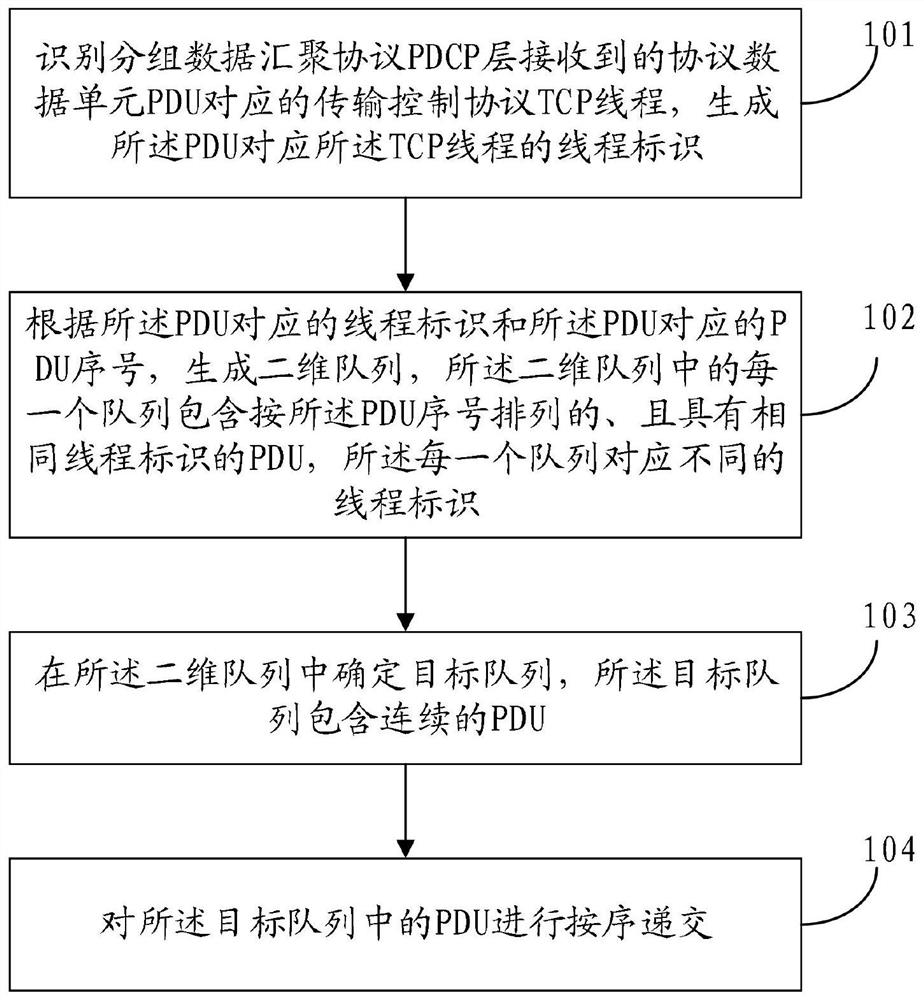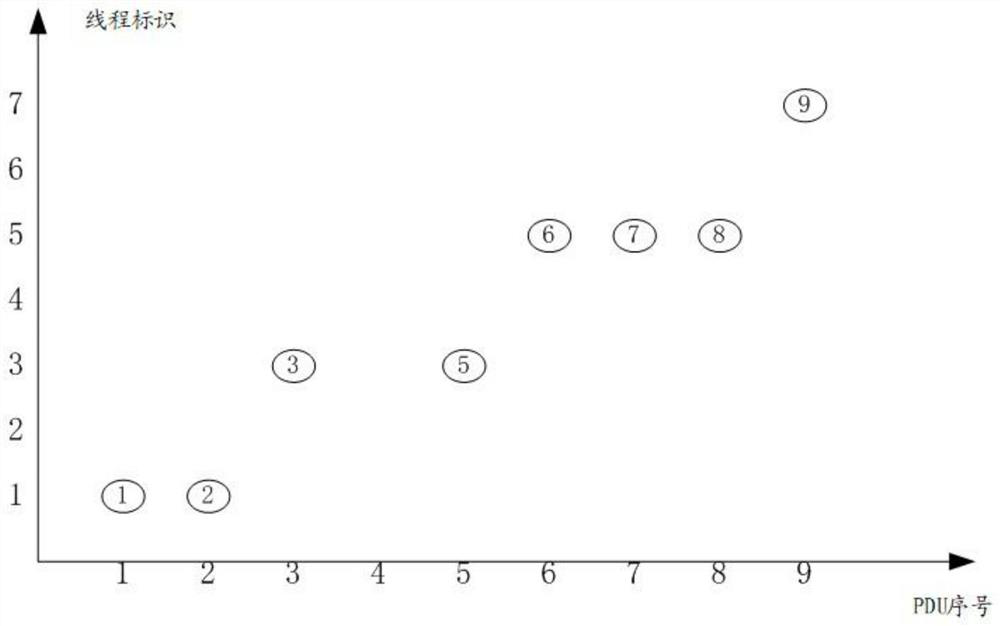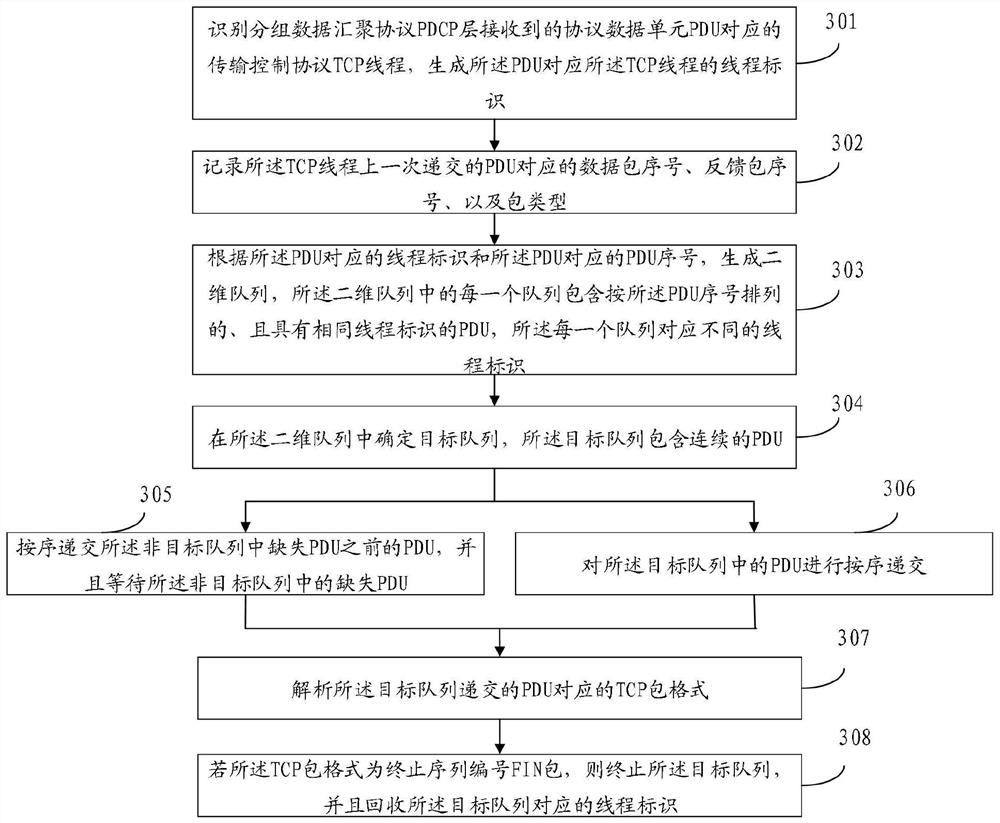Data transmission method and device
A data transmission method and data packet technology, which are applied in the field of data transmission methods and devices, can solve problems such as increased data transmission delay, failure to submit SDUs in time, overtime retransmission, etc., to reduce processing delays, improve delivery efficiency, The effect of saving network resources
- Summary
- Abstract
- Description
- Claims
- Application Information
AI Technical Summary
Problems solved by technology
Method used
Image
Examples
Embodiment 1
[0026] refer to figure 1 , which shows a flow chart of Embodiment 1 of a data transmission method of the present invention, the method is applied to a new air interface NR device, and the method may specifically include:
[0027] Step 101: Identify the transmission control protocol TCP thread corresponding to the protocol data unit PDU received by the PDCP layer, and generate a thread identifier corresponding to the TCP thread for the PDU.
[0028] The data transmission method in the embodiment of the present invention can be applied to NR (New Radio, new air interface) equipment. The new air interface NR is also called the fifth generation mobile communication system 5G equipment, and the user protocol of 5G-NR mainly includes PDCP (Packet DataConvergence Protocol, packet data convergence protocol), RLC (Radio Link Control, radio link control layer protocol) and MAC (Medium Access Control, media access control layer). When the base station transmits uplink data to the UE (Us...
Embodiment 2
[0044] refer to image 3 , shows a flowchart of Embodiment 2 of a data transmission method of the present invention.
[0045] Step 301, identifying the transmission control protocol TCP thread corresponding to the protocol data unit PDU received by the packet data convergence protocol PDCP layer, and generating the thread identifier corresponding to the TCP thread of the PDU;
[0046] When the packet data convergence protocol PDCP layer receives the protocol data unit PDU, it identifies the transmission control protocol TCP thread corresponding to the transmission of the PDU, and generates a thread identifier corresponding to the TCP thread of the PDU.
[0047] The step 301 includes:
[0048] Step 3011: Analyze the PDU received by the PDCP layer to obtain a TCP data packet; identify the TCP thread corresponding to the PDU according to the quadruple corresponding to the TCP data packet.
[0049] Step 3012: Generate a thread identifier corresponding to the PDU according to the...
PUM
 Login to View More
Login to View More Abstract
Description
Claims
Application Information
 Login to View More
Login to View More - R&D
- Intellectual Property
- Life Sciences
- Materials
- Tech Scout
- Unparalleled Data Quality
- Higher Quality Content
- 60% Fewer Hallucinations
Browse by: Latest US Patents, China's latest patents, Technical Efficacy Thesaurus, Application Domain, Technology Topic, Popular Technical Reports.
© 2025 PatSnap. All rights reserved.Legal|Privacy policy|Modern Slavery Act Transparency Statement|Sitemap|About US| Contact US: help@patsnap.com



